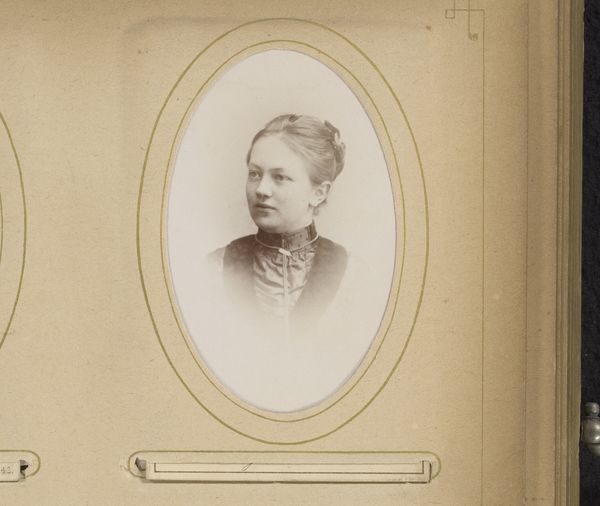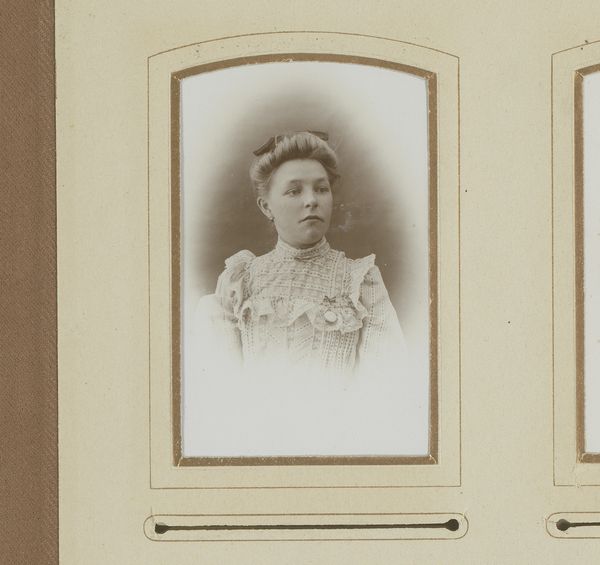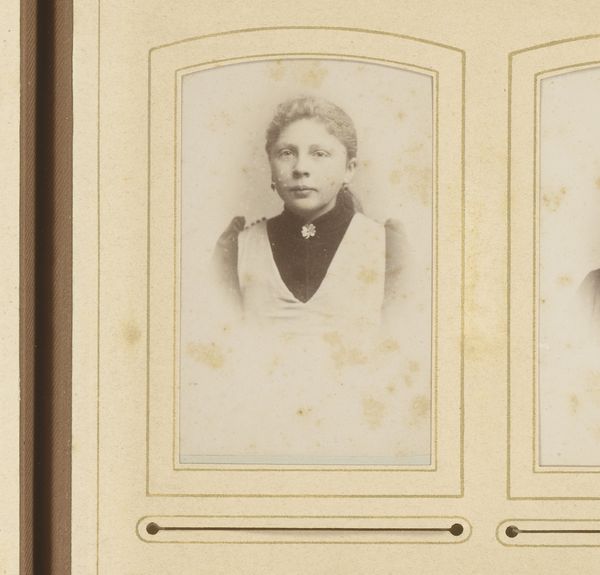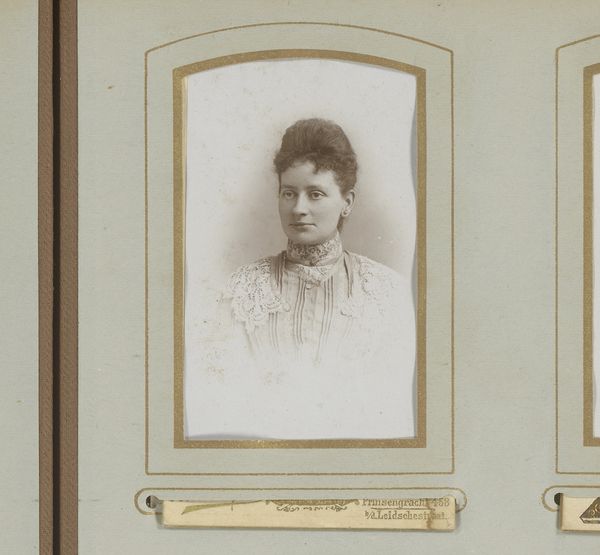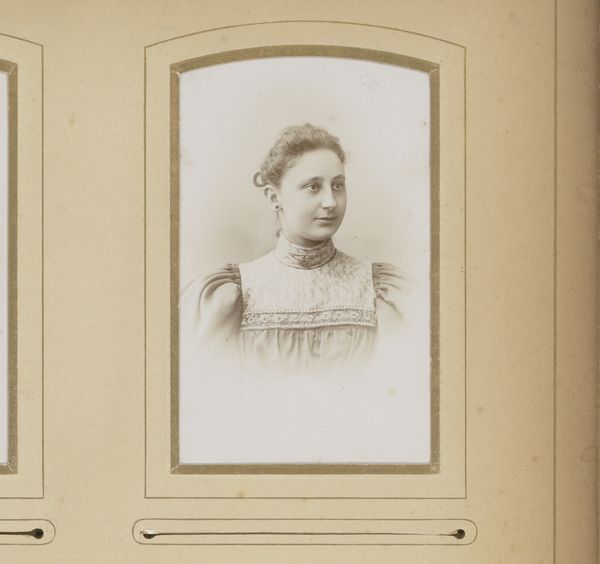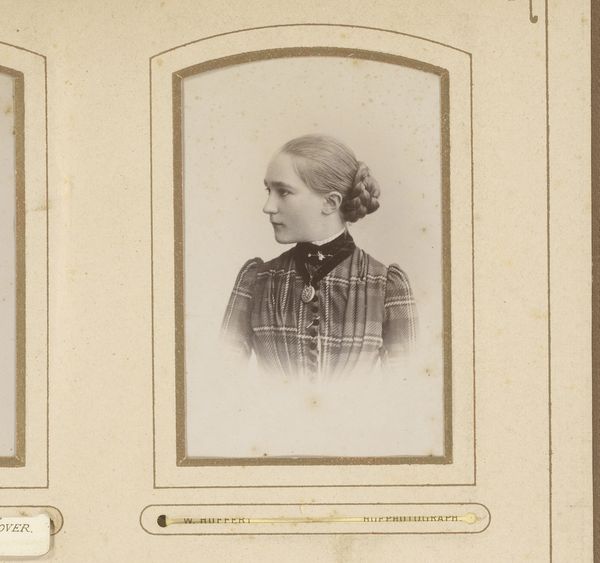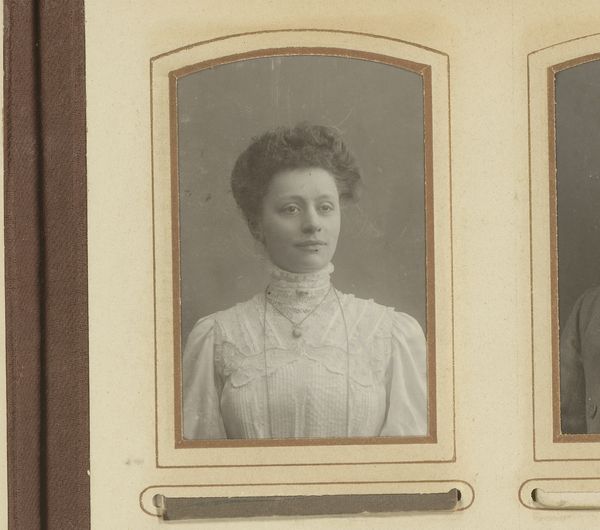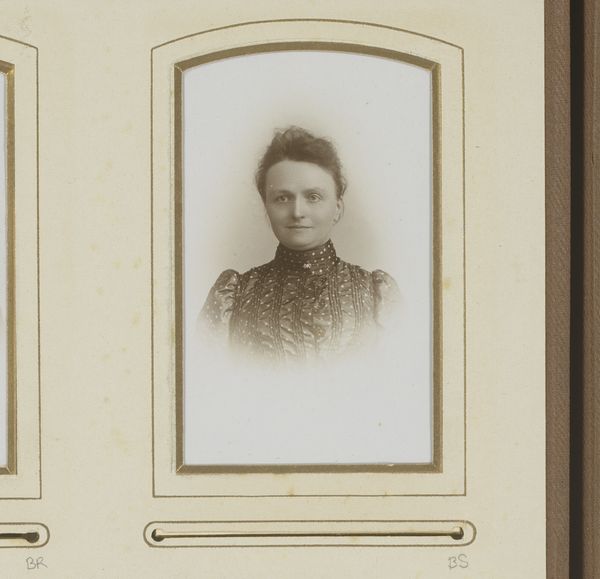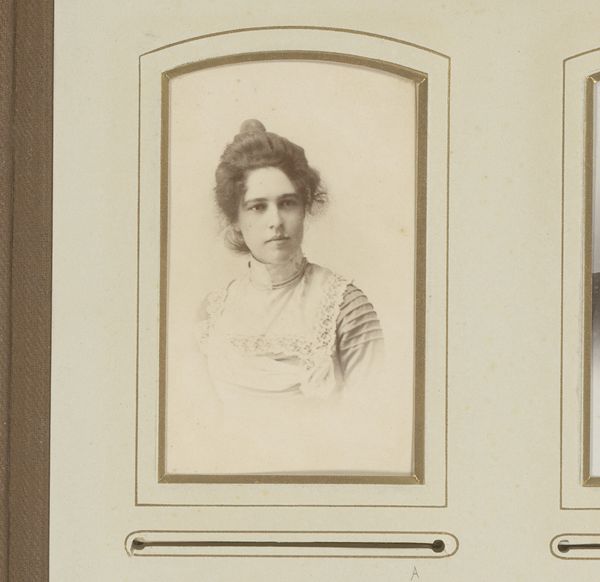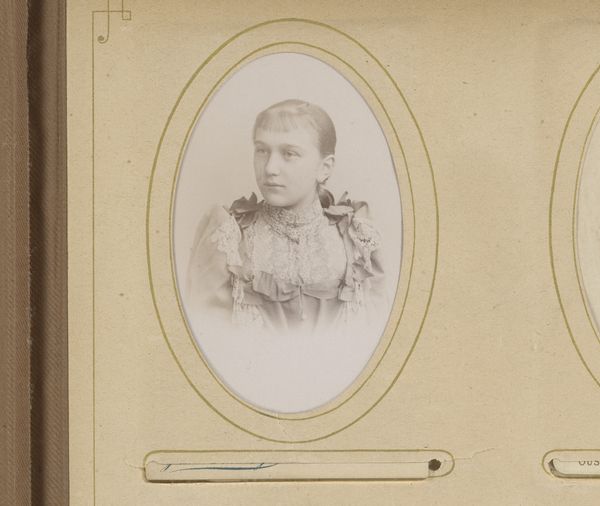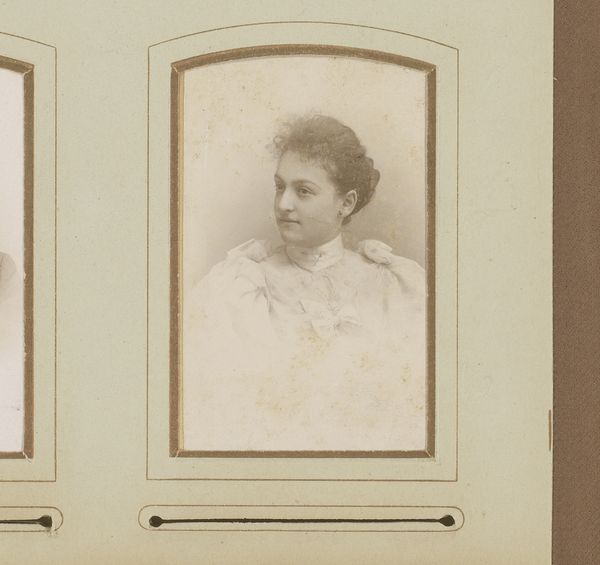
photography, gelatin-silver-print
#
portrait
#
pictorialism
#
photography
#
gelatin-silver-print
Dimensions: height 83 mm, width 53 mm
Copyright: Rijks Museum: Open Domain
Editor: This is “Portret van een vrouw,” or “Portrait of a Woman,” made between 1897 and 1920, created by Jac. and S. Schotel, using the gelatin silver print method. It's a small photograph, very delicate and formal, but also has this air of mystery surrounding the subject's expression. What do you see in this piece that maybe I'm missing? Curator: Well, let’s consider what was happening culturally at the time. Pictorialism, which is a clear stylistic choice here, emerged partly as a challenge to the idea of photography as purely documentary. These portraits, made primarily using the gelatin-silver print technique, invited themselves to be more than mere representations. Considering questions of race and representation, how do we read a portrait of a woman of color rendered through this intentionally softened, almost romantic lens? Editor: So, it's like a conscious effort to… idealize, even? But whose ideals are being centered, then? Curator: Exactly. We need to unpack who had access to photographic technology and who was being represented, and how. This portrait, likely commissioned, might be read as both an assertion of identity and an inscription within a system of dominant aesthetic values. The delicate lace, the softened focus, they all contribute to a specific narrative. What does that narrative tell us about the sitter, and about the society that produced the image? Editor: It really reframes my perspective. It's not just a pretty picture; it’s a statement, and perhaps also a negotiation. Curator: Absolutely. And recognizing that complexity is where the real dialogue begins. It makes one realize photography, or any art form, exists within and speaks to intricate socio-historical power structures.
Comments
No comments
Be the first to comment and join the conversation on the ultimate creative platform.

